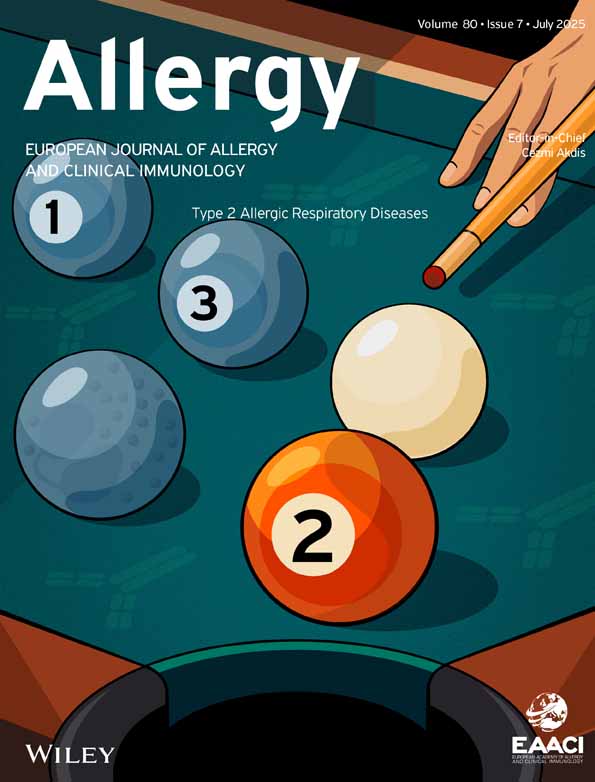Effect of a bronchial provocation test with house-dust mite on blood eosinophilia, eosinophil cationic protein, soluble interleukin-2 receptor, and interleukin-6 in asthmatic children
Abstract
Eighteen children with perennial asthma and allergy to house-dust mite (HDM) underwent a bronchial challenge with HDM. Before and 24 h after the test, a venous blood sample was taken to determine levels of eosinophils, eosinophil cationic protein (ECP), soluble interleukin-2 receptor (IL-2R), and interleukin-6 (IL-6). A histamine challenge was performed before and 24 h after the HDM challenge. All subjects showed an immediate asthmatic reaction (IAR). A definite late asthmatic reaction (LAR) was observed in 15 children, a probable LAR in two, and no LAR in one. Because of persistent bronchial obstruction (FEV1>70%), eight children were unable to perform a histamine challenge 24 h after the allergen challenge. These were the children with the lowest prechallenge provocation dose (PD20) of histamine. In the other 10 children, the mean PD20 histamine decreased after the HDM challenge (mean PD20 before was 0.56 mg/ml; after challenge it was 0.14 mg/ml; P= 0.007). After the HDM challenge, an increase was detected in the mean values of blood eosinophils (mean before was 446/mm3; mean after was 733/mm3; P= 0.002), ECP (mean before was 26.3 μg/1; mean after was 34.3 μg/1; P<0.040), and IL-2R (mean before was 116.35 U/ml; mean after was 128.52 U/ml; P<0.040). On the other hand, IL-6 remained unchanged after the HDM challenge (mean before was 9.47 pg/1; mean after was 9.70 pg/1; P= 0.360). Furthermore, as compared with a group of normal, age-matched children (n =18), asthmatic children were found to have higher prechallenge levels of ECP (mean: 10.3 μg/1 compared with 26.3 μg/1) (P>0.001) and IL-2R (mean: 80.30 U/ml compared with 116.35 U/ml) (P =0.009), but not of IL-6 (mean: 11.34 pg/1 compared with 9.47 pg/1) (P = 0.436).
A correlation was found between the duration of asthma and the severity of the LAR expressed as area under the curve (AUCLAR) (r = 0.50; P<0.040). Furthermore, a correlation was detected between the level of total IgE and the level of ECP (r = 0.51; P<0.030). The decrease in FEV1 during the LAR tended to correlate with the increase of IL-2R (r = 0.48; P = 0.050). This tendency was not found with the increase of eosinophils, nor with the increase of ECP. We conclude that both lymphocytes and eosinophils are activated by an allergen challenge, but that only the activation of lymphocytes tends to correlate with the LAR, suggesting that lymphocytes are also closely involved in the pathogenesis of the allergen-induced LAR.




